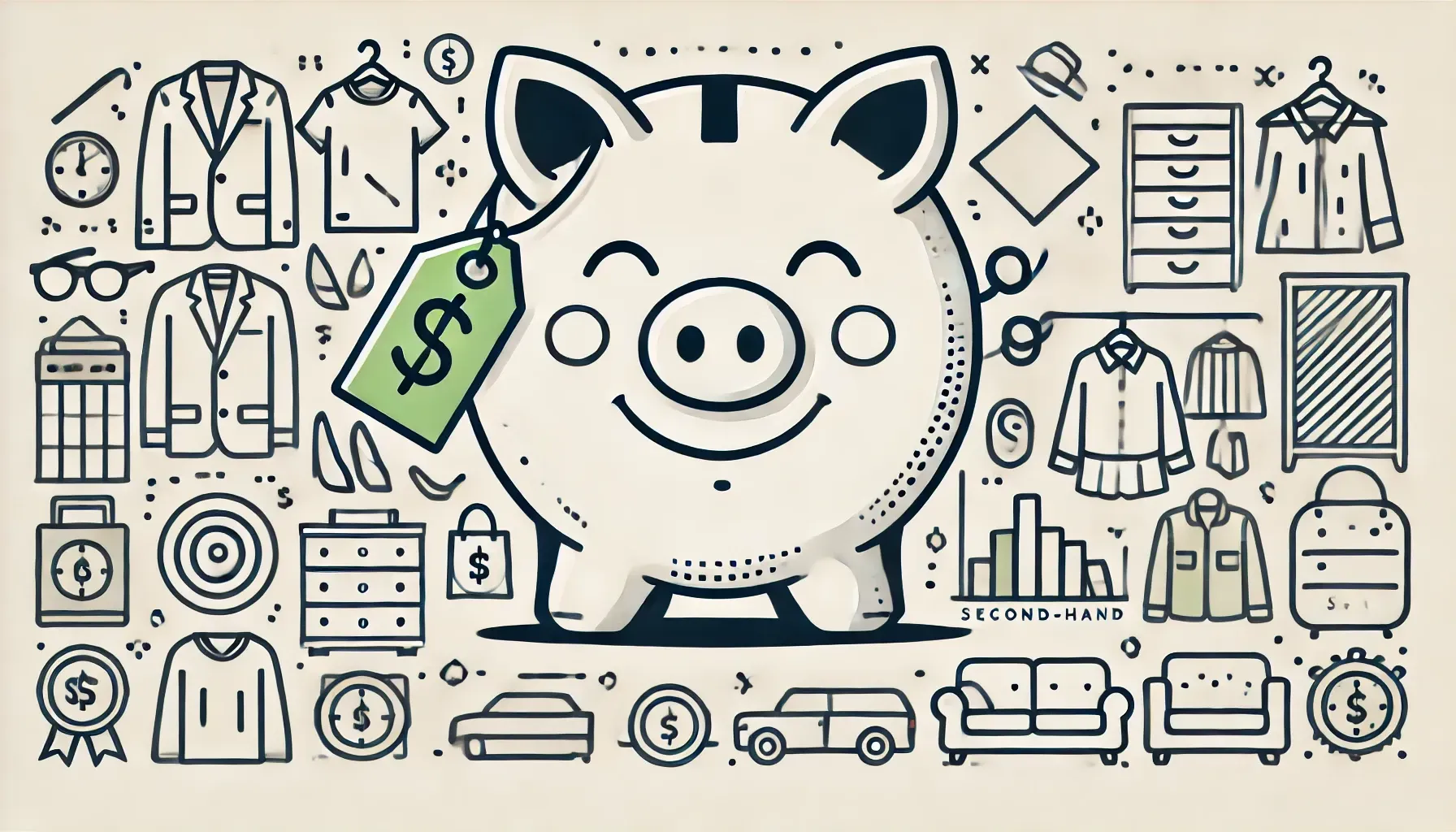In today's world of fast fashion and disposable consumer goods, buying second-hand items has become an increasingly popular and savvy choice for many shoppers. Not only does it offer environmental benefits, but it can also provide significant financial advantages. Let's explore the various ways that purchasing pre-owned items can benefit your wallet.
One of the most obvious financial benefits of buying second-hand is the substantial cost savings. Whether you're shopping for clothes, furniture, electronics, or books, pre-owned items are typically priced much lower than their brand-new counterparts. For example, a gently used designer dress that originally retailed for $500 might be available for just $100 at a consignment shop or online marketplace. This allows you to access high-quality items at a fraction of their original cost.
The savings can be even more dramatic when it comes to big-ticket items like cars or appliances. A used car that's just a few years old can cost 20-30% less than a new model, while still offering many of the same features and reliability. Similarly, purchasing a refurbished refrigerator or washing machine can save you hundreds of dollars compared to buying new.
These savings can add up quickly over time. Research has shown that thrift store shoppers save an average of nearly $150 per month, which amounts to approximately $1,760 annually. Imagine what you could do with that extra money in your pocket – pay off debt, boost your savings, or treat yourself to a well-deserved vacation.
Another financial benefit of buying second-hand is the ability to access higher-quality items that might otherwise be out of your budget. For instance, you might be able to afford a premium brand of clothing or a top-of-the-line piece of furniture when buying used, whereas the new versions would be prohibitively expensive. This allows you to invest in durable, well-made items that will last longer and provide better value in the long run.
Second-hand shopping also offers the opportunity to find unique, vintage, or rare items at bargain prices. Collectors and enthusiasts often scour thrift stores and online marketplaces for hidden gems. You might stumble upon a first edition book, a vintage record, or a piece of antique jewelry for a fraction of its true value. These finds can not only be personally satisfying but may also appreciate in value over time, potentially becoming valuable investments.
The financial benefits of buying second-hand extend beyond just the initial purchase price. When you buy pre-owned items, you're often able to resell them later for a similar price to what you paid, especially if you've taken good care of them. This means you can essentially "rent" items for free, using them for a period of time and then selling them on without losing money. This concept is particularly popular with children's items, as kids quickly outgrow clothes, toys, and equipment.
Shopping second-hand can also help you avoid the "depreciation hit" that comes with buying new items. New cars, for example, can lose up to 20% of their value in the first year alone. By purchasing a used car that's a year or two old, you let someone else absorb that initial depreciation while still getting a relatively new vehicle.
Another often overlooked financial benefit of buying second-hand is the reduction in impulse purchases. When shopping at thrift stores or browsing online marketplaces, you're less likely to be swayed by flashy marketing or the latest trends. Instead, you're more likely to focus on finding good deals on items you actually need or have been looking for. This can lead to more mindful consumption and less wasteful spending overall.
Buying second-hand can also be a great way to test out new hobbies or interests without making a significant financial commitment. For instance, if you're interested in trying out photography, you could purchase a used DSLR camera for a fraction of the cost of a new one. If you decide the hobby isn't for you, you can likely resell the camera for close to what you paid, minimizing your financial loss.
The rise of online marketplaces and apps dedicated to second-hand shopping has made it easier than ever to find great deals on pre-owned items. Platforms like eBay, Depop, and Facebook Marketplace allow you to browse a wide selection of items from the comfort of your home, often at even lower prices than you'd find in physical thrift stores. This convenience factor can lead to even more savings, as you're able to easily compare prices and find the best deals without spending time and money traveling to multiple stores.
It's worth noting that buying second-hand can also indirectly benefit your finances by promoting a more sustainable lifestyle. When you choose pre-owned items over new ones, you're reducing demand for new production, which can help slow down the cycle of consumerism. This mindset can spill over into other areas of your life, encouraging you to be more mindful of your spending habits and potentially leading to even greater financial savings.
Of course, it's important to approach second-hand shopping with a discerning eye. While there are many great deals to be found, it's crucial to carefully inspect items for quality and functionality before purchasing. This is especially true for electronics and appliances, where hidden issues could end up costing you more in the long run. However, with a bit of patience and research, you can find high-quality second-hand items that offer excellent value for money.
The financial benefits of buying second-hand extend beyond just individual consumers. Thrift stores and consignment shops often support local charities or provide jobs in the community. By shopping at these establishments, you're not only saving money but also contributing to the local economy and potentially supporting important causes.
In conclusion, the financial benefits of buying second-hand are numerous and significant. From substantial cost savings and access to higher-quality items to the potential for resale value and more mindful consumption, choosing pre-owned goods can have a positive impact on your wallet and your overall financial health. As more people recognize these advantages, second-hand shopping is likely to continue growing in popularity, offering even more opportunities for savvy consumers to save money while reducing their environmental impact.






